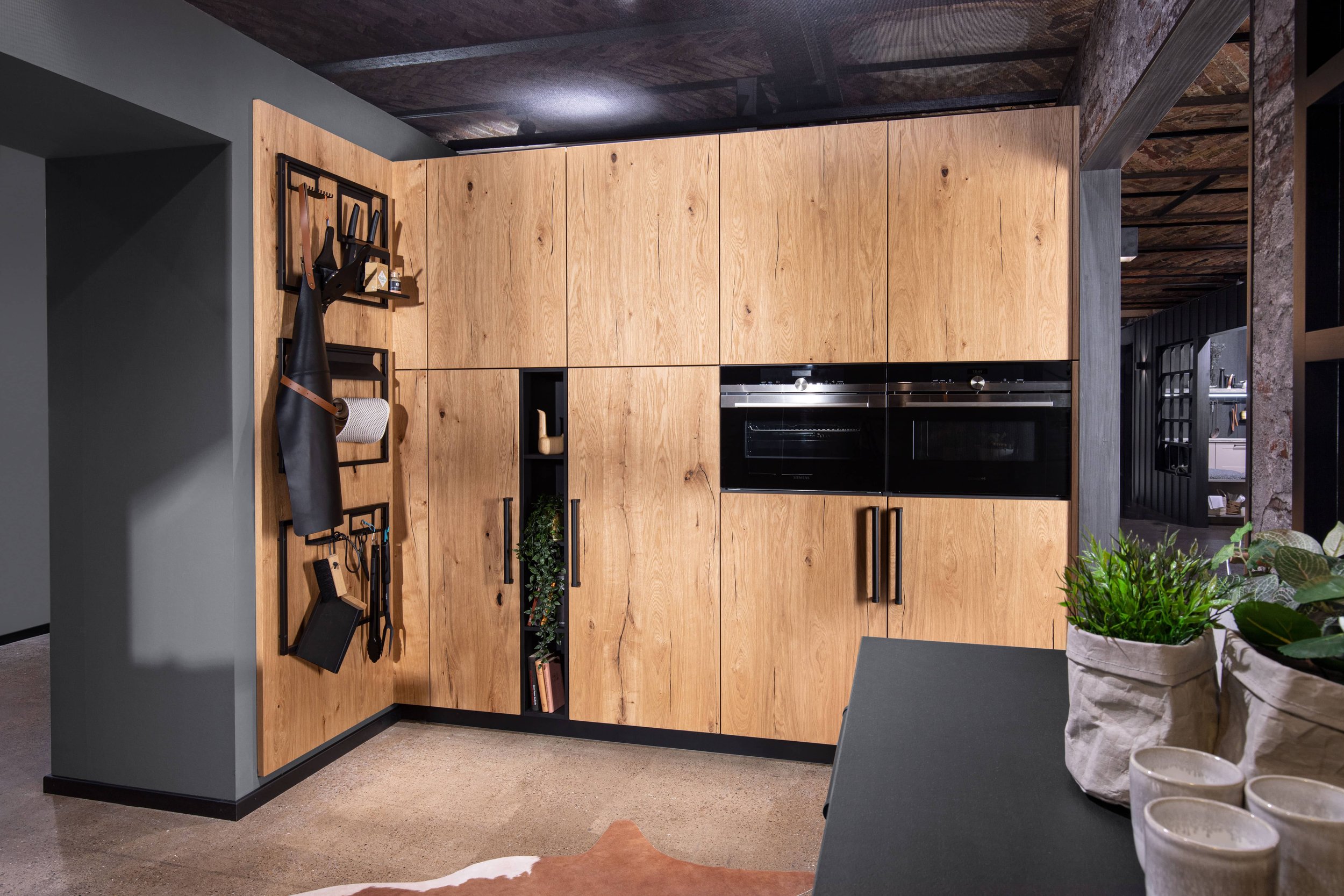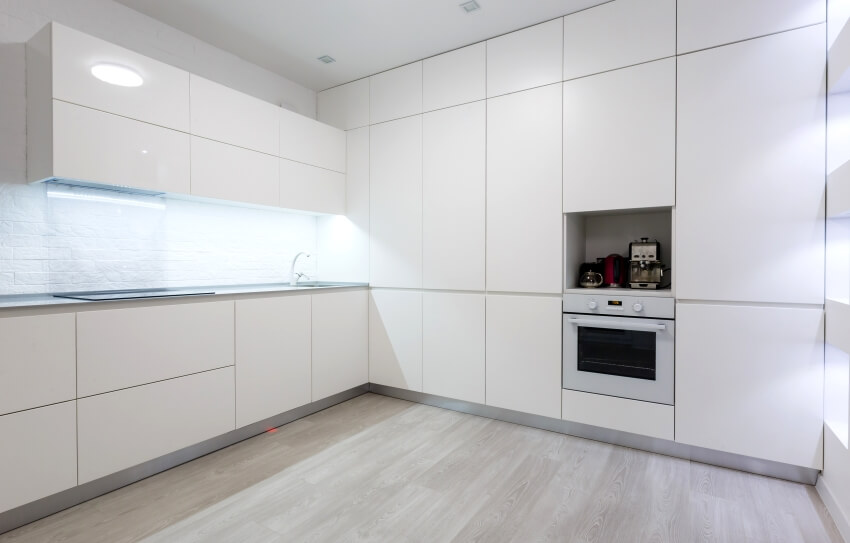Aesthetics and Design
.jpg)
The choice between kitchen cabinets with handles or without significantly impacts the overall aesthetic and design of the kitchen. Handles add a functional and decorative element, while handleless cabinets offer a sleek and minimalist look. The impact of handles on kitchen cabinet aesthetics varies depending on the style of the kitchen and the type of handles chosen.
The Impact of Handles on Kitchen Cabinet Aesthetics
The style of the kitchen plays a crucial role in determining the suitability of handles.
- Modern kitchens often feature minimalist handleless cabinets or sleek bar handles to maintain a clean and contemporary look.
- Traditional kitchens tend to embrace ornate knobs or pulls with intricate designs to complement the classic aesthetic.
- Minimalist kitchens prioritize simplicity and functionality, making handleless cabinets or minimalist bar handles the preferred choice.
- Rustic kitchens often incorporate rustic knobs or pulls with distressed finishes to enhance the warm and inviting ambiance.
Comparing Handleless Cabinets with Various Handle Styles
Handleless cabinets create a seamless and uncluttered appearance, emphasizing the clean lines of the kitchen design. However, they can sometimes be challenging to open, especially for cabinets with heavier doors.
- Knobs are small, round handles that offer a classic and traditional look. They are commonly used in traditional kitchens and can add a touch of elegance.
- Pulls are longer, rectangular handles that provide a more contemporary feel. They are often found in modern kitchens and offer a comfortable grip.
- Bar handles are sleek and minimalist, creating a clean and modern look. They are typically made of metal and can be found in various finishes to complement different kitchen styles.
Examples of Kitchen Cabinet Designs with and Without Handles
- Handleless kitchen cabinets can be seen in contemporary kitchens with sleek, minimalist designs. The absence of handles creates a seamless and uncluttered look, enhancing the overall modern aesthetic.
A kitchen with handleless cabinets often features integrated appliances, smooth countertops, and a monochromatic color scheme, further emphasizing the minimalist approach.
- Kitchen cabinets with knobs are commonly found in traditional kitchens. The ornate knobs, often made of brass or porcelain, add a touch of elegance and sophistication to the overall design.
These kitchens often feature wooden cabinets, patterned backsplashes, and decorative lighting, creating a warm and inviting atmosphere.
- Kitchen cabinets with pulls are popular in modern kitchens, providing a sleek and contemporary look. The pulls, often made of metal or wood, offer a comfortable grip and complement the clean lines of the kitchen design.
These kitchens often feature open shelving, stainless steel appliances, and a neutral color palette, emphasizing functionality and modern aesthetics.
Functionality and Usability

The choice between kitchen cabinets with handles or without can significantly impact the overall functionality and usability of the kitchen. While handles offer a familiar and comfortable grip, handleless cabinets present a more minimalist aesthetic and can contribute to a sense of spaciousness. This section will explore the ergonomic advantages and disadvantages of both options, analyzing how handleless cabinets are designed to provide an intuitive user experience.
Ergonomic Advantages and Disadvantages of Handles
Handles offer a distinct advantage in terms of ease of opening and closing cabinets. The physical grip provided by handles allows for a more controlled and effortless opening, particularly for heavier cabinets or those with doors that require a significant amount of force. This is especially beneficial for individuals with limited hand strength or dexterity. However, handles can also present ergonomic challenges. Protruding handles can pose a safety hazard, especially in kitchens with high traffic or where young children are present. Furthermore, handles can accumulate dirt and grime, requiring regular cleaning.
Design Considerations for Handleless Cabinets
Handleless cabinets rely on innovative design solutions to provide a seamless and intuitive user experience. Common methods include:
- Push-to-open mechanisms: These systems utilize a spring-loaded mechanism that allows doors to open with a gentle push. This eliminates the need for visible handles, creating a clean and uncluttered look. However, push-to-open systems can require a bit more force to open, potentially making them less accessible to individuals with limited hand strength.
- Recessed grooves or finger pulls: These subtle design elements provide a grip point for opening cabinets, while maintaining a streamlined appearance. The effectiveness of these solutions depends on the size and depth of the groove or pull, ensuring a comfortable and secure grip.
- Integrated handles: This approach involves incorporating handles directly into the cabinet door, often as part of the design itself. This can create a seamless and aesthetically pleasing look, but it may limit the flexibility in handle placement and style.
Challenges and Solutions for Handleless Cabinets, Kitchen cabinets with handles or without
While handleless cabinets offer a sleek and modern aesthetic, they can present some challenges. One common concern is the potential for finger smudges, especially on high-traffic cabinets. To mitigate this, manufacturers often use materials that are resistant to fingerprints or incorporate features like brushed finishes that help to disguise smudges.
- Finger Smudges: Handleless cabinets are susceptible to finger smudges, particularly in high-traffic areas. This can be mitigated by using materials that are resistant to fingerprints, such as stainless steel or brushed finishes.
- Specialized Hardware: Handleless cabinets often require specialized hardware, such as push-to-open mechanisms or integrated handles. This can increase the cost of installation and require specialized knowledge to install and maintain.
Cleaning and Maintenance: Kitchen Cabinets With Handles Or Without

Kitchen cabinets, whether with handles or handleless, are a significant investment in any kitchen. Keeping them clean and well-maintained is crucial for their longevity and hygiene. The choice between handles and handleless designs can influence cleaning practices and the potential for dirt and grime accumulation.
Cleaning and Maintenance Considerations
The presence of handles introduces additional surfaces that can trap dirt, grime, and bacteria. Handleless cabinets, while aesthetically sleek, can present challenges in cleaning hard-to-reach areas.
Cleaning Handleless Cabinets
- Regular Dusting: Dusting handleless cabinets regularly with a microfiber cloth is essential to prevent the accumulation of dust and grime. Pay attention to corners and crevices where dust can settle.
- Cleaning with a Damp Cloth: Wipe down the cabinet surfaces with a damp microfiber cloth and a mild cleaning solution. Avoid harsh chemicals that can damage the cabinet finish.
- Cleaning Hard-to-Reach Areas: For hard-to-reach areas, use a soft-bristled brush or a vacuum cleaner with a crevice attachment.
- Cleaning Fingerprints: Fingerprints can be easily removed with a damp cloth and a mild cleaning solution. For stubborn fingerprints, a gentle glass cleaner can be used.
Cleaning Cabinets with Handles
- Regular Cleaning: Handles should be cleaned regularly with a damp cloth and a mild cleaning solution. Pay attention to the crevices and corners of the handles, where dirt and grime can accumulate.
- Disinfecting: Regularly disinfecting handles, especially in high-traffic areas, is essential to prevent the spread of bacteria. A solution of water and white vinegar can be used for disinfection.
- Cleaning Handles with Finishes: Handles with specific finishes, such as chrome or brushed nickel, require special cleaning agents. Avoid using abrasive cleaners that can damage the finish.
Kitchen cabinets with handles or without – The kitchen cabinets stood silent, their smooth surfaces a stark contrast to the worn handles of the antique dresser in the corner. The dresser, with its intricate carvings and faded paint, held a secret – a collection of antique spool cabinet parts , each one whispering stories of a bygone era.
Perhaps the handles on the cabinets were once part of that very dresser, their absence a silent testament to the passage of time and the constant re-imagining of spaces within a home.
The old kitchen cabinets, their surfaces worn smooth with time, stood silent in the dim light. They whispered secrets, their handles cold and unyielding. Were they hiding treasures, or something more sinister? Perhaps their locks held the key, a glimpse into a past forgotten.
The types of antique cabinet locks were a mystery, each a testament to a bygone era. And behind those locks, what stories did they hold? Stories that might be better left untold, or perhaps, the secrets were simply the absence of handles, a silent invitation to explore.
